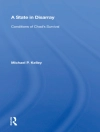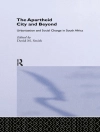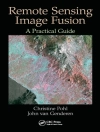Since its discovery in 1610, Europaone of Jupiter’s four large moonshas been an object of interest to astronomers and planetary scientists. Much of this interest stems from observations made by NASA’s Voyager and Galileo spacecraft and from Earth-based telescopes indicating that Europa’s surface is quite young, with very little evidence of cratering, and made principally of water ice.More recently, theoretical models of the jovian system and Europa have suggested that tidal heating may have resulted in the existence of liquid water, and perhaps an ocean, beneath Europa’s surface. NASA’s ongoing Galileo mission has profoundly expanded our understanding of Europa and the dynamics of the jovian system, and may allow us to constrain theoretical models of Europa’s subsurface structure.Meanwhile, since the time of the Voyagers, there has been a revolution in our understanding of the limits of life on Earth. Life has been detected thriving in environments previously thought to be untenablearound hydrothermal vent systems on the seafloor, deep underground in basaltic rocks, and within polar ice. Elsewhere in the solar system, including on Europa, environments thought to be compatible with life as we know it on Earth are now considered possible, or even probable. Spacecraft missions are being planned that may be capable of proving their existence.Against this background, the Space Studies Board charged its Committee on Planetary and Lunar Exploration (COMPLEX) to perform a comprehensive study to assess current knowledge about Europa, outline a strategy for future spacecraft missions to Europa, and identify opportunities for complementary Earth-based studies of Europa. (See the preface for a full statement of the charge.)
Committee on Planetary and Lunar Exploration & Division on Engineering and Physical Sciences
Science Strategy for the Exploration of Europa [EPUB ebook]
Science Strategy for the Exploration of Europa [EPUB ebook]
ซื้อ eBook เล่มนี้และรับฟรีอีก 1 เล่ม!
ภาษา อังกฤษ ● รูป EPUB ● หน้า 80 ● ISBN 9780309173049 ● สำนักพิมพ์ National Academies Press ● การตีพิมพ์ 1999 ● ที่สามารถดาวน์โหลดได้ 3 ครั้ง ● เงินตรา EUR ● ID 7149579 ● ป้องกันการคัดลอก Adobe DRM
ต้องใช้เครื่องอ่านหนังสืออิเล็กทรอนิกส์ที่มีความสามารถ DRM












